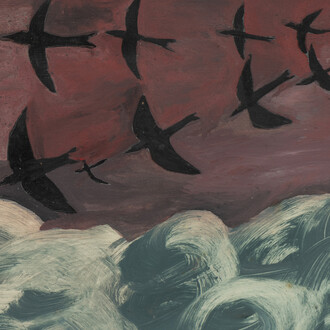Booth Gallery is pleased to present “The New Baroque” a group exhibition co-curated by Rob Zeller and Casey Gleghorn featuring an astonishing culmination of works by 22 of the most talented contemporary figurative artists working today.
“The New Baroque” was inspired by the artist and co-curator Rob Zeller’s new book on the exciting resurgence of the figure in art, The Figurative Artist’s Handbook. Much like the Baroque period, the diverse array of artists in this exhibition speak to contemporary political, personal and formal artistic concerns using a common, figurative language in uniquely personal styles. While the book was used as a starting point, Zeller and Booth Gallery Director, Casey Gleghorn have moved beyond the scope of the printed text. They have added some artists not included in the original printing, both painters and sculptors, to reflect a broader spectrum of new and exciting voices in the figurative movement.
The original Baroque, an effort largely financed by the Catholic Church as a reaction to the Protestant Reformation, favored the “Blockbuster”, large-scale dramatic paintings of Biblical scenes that illustrated how this material world interacted with the Divine, the spiritual. Entirely secular in nature and more personal in scale, this exhibition also features artists who dig deeper than the mere appearance of things, the first level of realism. They are asking bigger questions of personal and metaphysical concerns, using the figure and its environment as a foil to explore the nature of existence.
While this show offers up a diverse array of 22 contemporary figurative artists, it is richly steeped in a dialogue with artists of the past. Because figurative art has been in existence prior to the Egyptians, there is a deep well of experience for contemporary artists to draw upon. Chie Shimizu’s two sculptures, Untitled No.15 and The Story of the River, are rooted in an interesting fusion of western and traditional Japanese aesthetics. Shimizu’s work features subjects best read as iconic stand-ins for humanity, general rather than specific. They are meditations on our finite relationship to the infinite.
In Alex Kanevsky’s two drawings in the show, The Most Sinister Model and T.S we see figures drawn with a kinetic rhythm of staccato movements. In his method, Kanevsky leaves behind both the evidence of a grid and the ghost contours of the model’s previous positions. It is as if we are watching their movements through time-lapse photography. Kanevsky’s intent is not to capture specificity, but rather to capture movement. Eschewing the use of value to create form, his rhythmic line quality is reminiscent of Giacometti’s and that artist’s efforts to both place the figure in space and reveal our relationship to it.
Christian Johnson’s highly original wall-mounted, cut out drawing features a sensual, curvaceous contour that at first call to mind the Viennese Fin de siècle of Gustav Klimt and Egon Schiele, but the muted grey tonalities of his modeling is more closely evocative of Jasper John’s cool, intellectual Modernism. Johnson concerns are of a formal nature, but the space between the viewer and the beautiful pose of the model is quite intimate. He draws feminine beauty distilled to its essence.
Few artists working today are as Neoclassical in their understanding of form as Camie Salaz. Her working method is entirely rooted in the French Academic system of the late 19th century. In Narcissus, a story alternately of vanity and self-loathing, Salaz shows a terrible moment of anguish as Narcissus struggles to tear himself away from his own reflection, yet he is gripped tightly by it and cannot escape. Cleverly, we cannot see the reflection, but only a single, powerful arm as it pulls him down to certain death. As dramatic as the mythology of Ovid it draws upon, Salaz’s Narcissus feels surprisingly contemporary in its use of violence.
Some of the artists in this exhibition convey narrative through the use of single figures, in isolation, and others tell stories through the use of multiple figure composition, as we see in the case of Bo Bartlett’s enigmatic work, Diaspora. Here, we witness a scene with a lot of activity going on and much iconic imagery. The classical elements of Nature are present: Earth, Fire, Water and Air, as is a masculine/ feminine duality. Two females embrace in the center of the composition, and a masculine hero figure, walks towards us carrying an unconscious young woman in his arms, as if he pulled her from the fire. We experience this narrative in close proximity, but no clarity is provided. We are not clear as to what is taking place, nor what it means. Diaspora Bartlett’s work often raises as many questions as it answers.
















